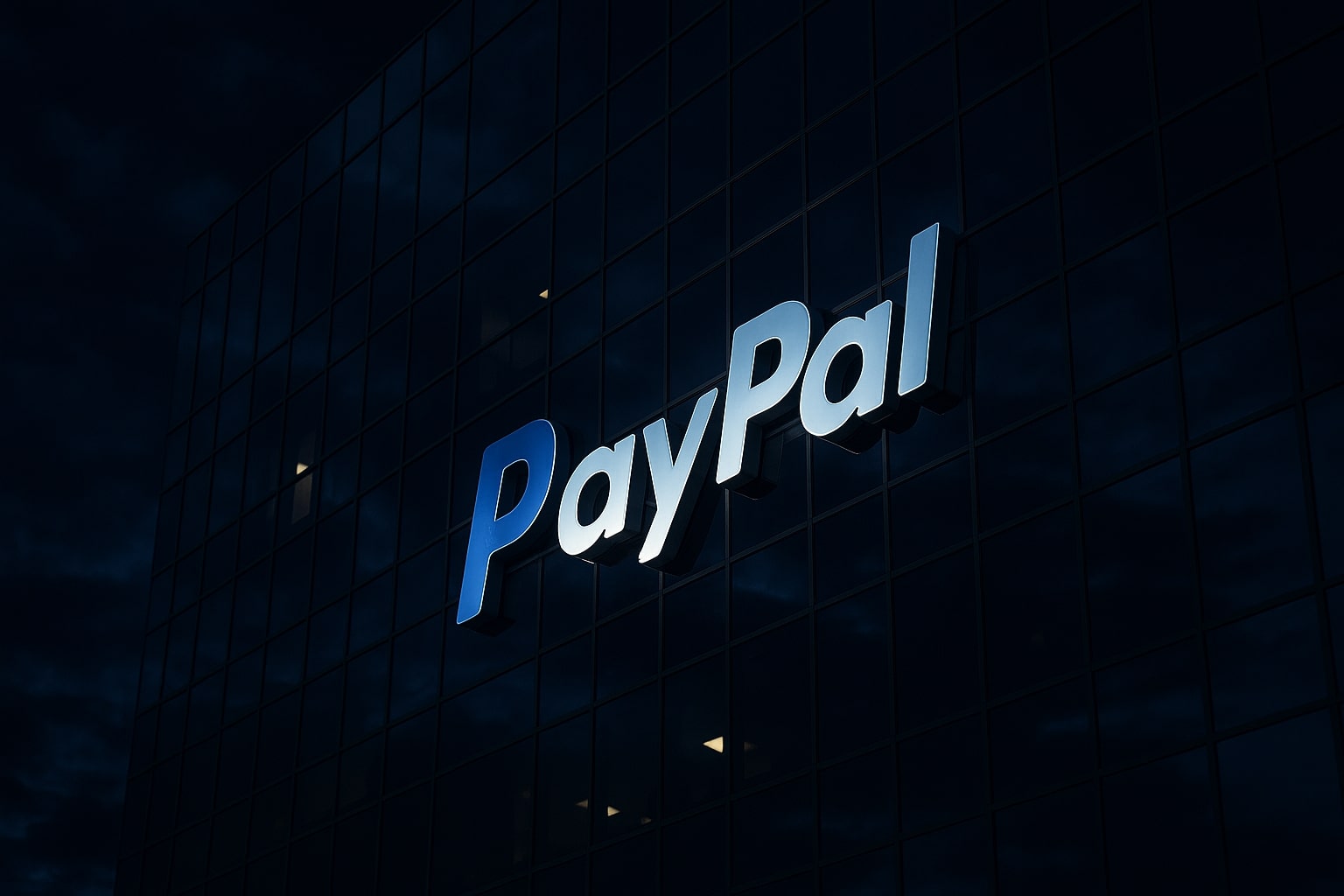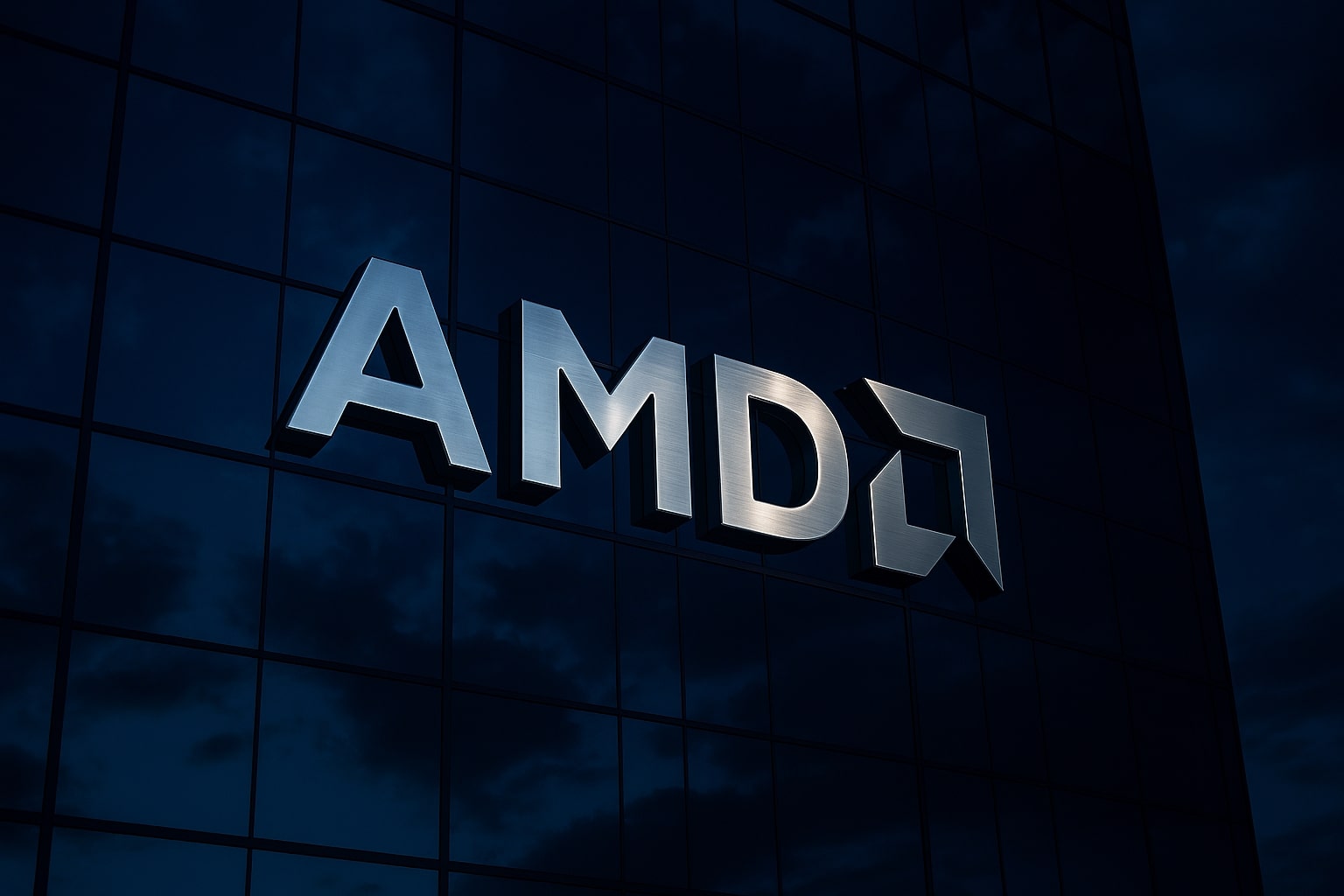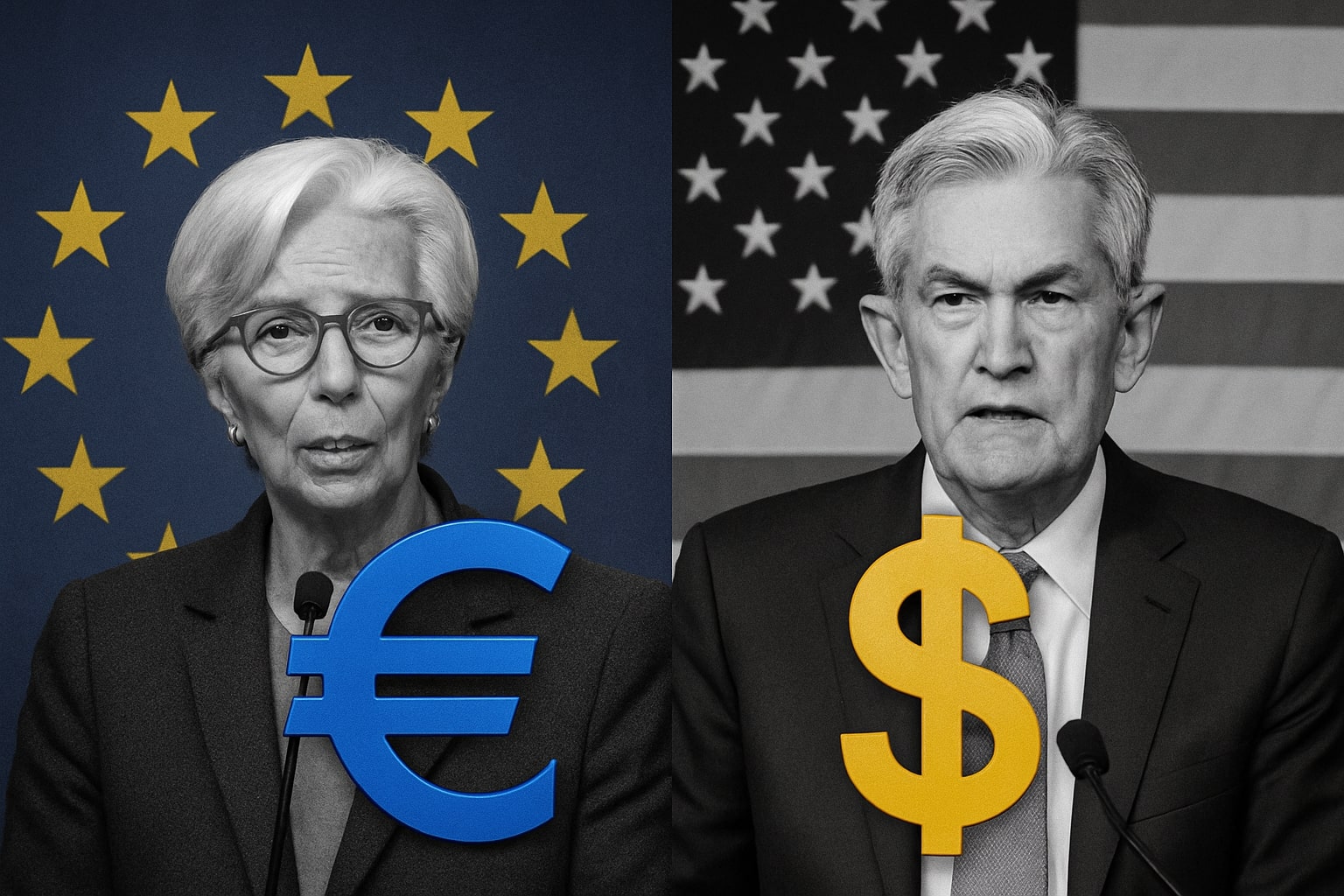
PayPal Stock Price Forecast - PYPL Surges on AI and Venmo Growth as Analysts Eye $100 Price Target
With Q3 EPS at $1.34 and revenue at $8.42B, PayPal (NASDAQ:PYPL) delivers robust growth, boosts buybacks to $5.7B, and accelerates AI-driven commerce and Venmo integration | That's TradingNEWS
PayPal Holdings Inc. (NASDAQ:PYPL) — Undervalued Fintech Giant Rebuilding for Durable Growth
Q3 Results Confirm Turnaround Momentum and Margin Expansion
PayPal Holdings Inc. (NASDAQ:PYPL) reported a strong rebound in Q3 2025, solidifying its recovery trajectory and demonstrating its ability to scale profitably in a volatile macro environment. Revenue rose 7.26% year-over-year to $8.42 billion, exceeding estimates by $190 million, while non-GAAP EPS climbed 11.7% to $1.34, beating guidance of $1.18–$1.22. Net income increased 23.5% to $1.25 billion, supported by EBITDA growth of 10.6% to $1.86 billion. Transaction margin dollars reached $3.87 billion, a 6% increase YoY, above the forecasted range. Total Payment Volume (TPV) accelerated to $458.1 billion, up 8.4% YoY, signaling sustained strength in unbranded processing, which advanced 6% for the third consecutive quarter. Despite these gains, the market continues to discount PYPL, trading around $60.57 with a P/E ratio of 12.15, far below sector averages. At less than 11× forward earnings, the valuation implies nearly 50% upside if re-rated toward a normalized 17× multiple, which would place the stock between $90 and $100 per share.
Cash Strength, Share Buybacks, and Dividend Initiation Reinforce Stability
The company ended Q3 with $14.4 billion in cash and investments against $11.4 billion in debt, maintaining a net cash position of $3 billion. Such balance sheet discipline allows NASDAQ:PYPL to invest aggressively in innovation while rewarding shareholders. PayPal repurchased $1.5 billion worth of shares during the quarter and $5.7 billion over the trailing 12 months—exceeding its GAAP net income. Shares outstanding declined to 935.65 million, providing continued EPS leverage. The introduction of a $0.14 quarterly dividend marks the beginning of a structured capital return policy. This mix of liquidity, profitability, and capital efficiency distinguishes PYPL from peers reliant on external financing, positioning it as a self-funded fintech operator with one of the sector’s cleanest balance sheets.
Management Outlook Highlights Long-Term Growth Commitment
CEO Alex Chriss outlined PayPal’s 2026 growth roadmap during Citi’s 14th Annual FinTech Conference (November 19, 2025), reaffirming the company’s evolution into a full-spectrum digital payment ecosystem. The Q4 2025 outlook guides up to 5% year-over-year growth in transaction margin, with management acknowledging ongoing consumer spending headwinds across discretionary categories. Chriss emphasized that the company’s goal is to “enable payments anytime, anywhere, in any way,” reflecting PayPal’s integrated approach across Pay Now, Pay Later, Pay Online, Pay In-Store, and Pay Agentically. The upcoming Venmo–PayPal interoperability rollout will allow seamless fund transfers and merchant transactions between both platforms, unlocking access to over 35 million merchants and accelerating network efficiency. Venmo’s annual revenue trajectory is projected to surpass $2 billion, with management estimating only 20–25% of its total addressable monetization potential currently realized.
AI Integration and Agentic Commerce Define the Next Growth Chapter
PayPal’s partnership with OpenAI represents a turning point for the company’s strategic direction. Through integration with ChatGPT’s payment system, NASDAQ:PYPL gains a foothold in the emerging agentic commerce ecosystem—where autonomous AI agents initiate transactions without human input. This initiative builds upon PayPal’s collaboration with Perplexity, which jointly launched an AI-powered shopping assistant earlier this year. Together, these partnerships embed PayPal’s payment rails across next-generation digital experiences. Management sees long-term revenue potential not only from direct AI commerce but also from data-driven optimization. Internally, AI tools now automate fraud prevention and optimize payment routing, expected to lift transaction margin by 50–75 basis points over the next fiscal year. These operational efficiencies provide a margin cushion even if top-line growth moderates amid macro softness.
Buy Now, Pay Later Expansion and Generational Payment Shift
The Buy Now, Pay Later (BNPL) segment continues to gain traction, fueled by millennial and Gen Z consumers migrating away from traditional credit. PayPal processed over $30 billion in BNPL transactions over the past year, growing 19% year-over-year, with default rates remaining below 1.5%, outperforming competitors such as Affirm and Klarna. The CEO noted a “younger demographic leaning heavily toward debit and installment payments,” presenting a structural shift that favors PayPal’s embedded financing model. BNPL usage across PayPal’s global network has grown particularly fast in Europe and the U.S., where it is integrated into over 70% of top merchants by volume. Management acknowledges the credit risk exposure but emphasizes the robustness of its AI-driven underwriting and diversified portfolio across merchant categories.
Read More
-
Stock Market Today - Dow Jumps 493 Points as Fed Cut Bets Surge; Nasdaq Surges With NVDA,ORCL and LLY, S&P 500 Extend Broad Market Rally
22.11.2025 · TradingNEWS ArchiveStocks
-
Ethereum Price Forecast - ETH-USD Steadies at $3,085 as ETF Demand, Fed Caution, and Whale Accumulation Shape Outlook
22.11.2025 · TradingNEWS ArchiveCrypto
-
Gold Price Forecast - XAU/USD Steadies Above $4,000 as Fed Rate Path and Dollar Strength
22.11.2025 · TradingNEWS ArchiveCommodities
-
EUR/USD Price Forecast - Euro Falls to 1.1500 as Fed Uncertainty and Strong Dollar Drive Market Volatility
22.11.2025 · TradingNEWS ArchiveForex
Venmo, Global Wallet Interoperability, and Ecosystem Scale
The company’s ecosystem transformation is anchored in PayPal World, an interoperable payment network connecting Venmo, UPI, WeChat, Mercado Pago, and other regional wallets. This architecture allows cross-border P2P and merchant transactions without reliance on card rails. The rollout of Venmo-PayPal integration enables Venmo users to transact on any PayPal merchant site instantly, effectively opening PayPal’s global infrastructure to a new generation of mobile-first consumers. The company is targeting a 4–5× increase in ARPA (average revenue per account) through expanded services, including direct deposits, debit products, and merchant cashback features. Chriss noted that Venmo is “only scratching the surface of its wallet potential,” with penetration expected to expand significantly in 2026 as interoperability deepens.
Valuation, Financial Metrics, and Analyst Projections
At $60.57, NASDAQ:PYPL commands a market capitalization of $56.7 billion, trading near its 52-week range of $55.85–$93.64. The price-to-book ratio stands at 2.71, with return on capital at 12.48% and net profit margin at 14.83%. Analysts project 5–7% revenue growth annually through 2027, with non-GAAP EPS expected to grow 10–12% per year under conservative macro assumptions. Free cash flow jumped 335% YoY to $1.53 billion, signaling powerful cash generation despite flat active account growth. Given its fundamentals, applying a modest 15× forward P/E implies a 12-month target price near $90, representing approximately 49% upside from current levels.
PayPal Insider Transactions ➤ reveal consistent executive and institutional confidence, with limited selling activity and steady institutional accumulation during Q3 and Q4.
Strategic Risks and Execution Challenges
Risks remain centered around macro sensitivity, merchant integration delays, and competitive pressure in checkout. Branded checkout continues to face erosion from Apple Pay and Shopify’s Shop Pay, while unbranded merchant onboarding faces technical debt accumulated from inconsistent legacy integrations. The CEO acknowledged that PayPal must “rebuild discipline and uniformity” across its merchant interfaces, estimating a 12–18 month modernization timeline. In the BNPL segment, management remains cautious about credit normalization in a potential U.S. slowdown, with expected losses projected between 1.3–1.5% of receivables. Competitive risk from Amazon Pay, Stripe, and Google Wallet also remains material, though PayPal’s scale, liquidity, and regulatory standing offer resilience few rivals can match.
Trading News Verdict: BUY (Bullish Outlook Above $55 Support)
Stock Profile ➤
NASDAQ:PYPL represents one of the most mispriced large-cap fintech assets in global markets. With EPS growth above 10%, a solid free cash flow yield exceeding 6%, a strong net cash position, and a relentless buyback program, the valuation at 12× earnings is unjustified. The integration of agentic commerce, AI-powered payment rails, and Venmo interoperability provides multi-year catalysts for reacceleration. Based on fundamentals and valuation parity with historical multiples, Trading News maintains a BUY rating with a price target range of $90–$100 within 12 months.
Verdict: BUY (Bullish) — Strong upside potential supported by execution strength, disciplined buybacks, and AI-driven innovation.



















